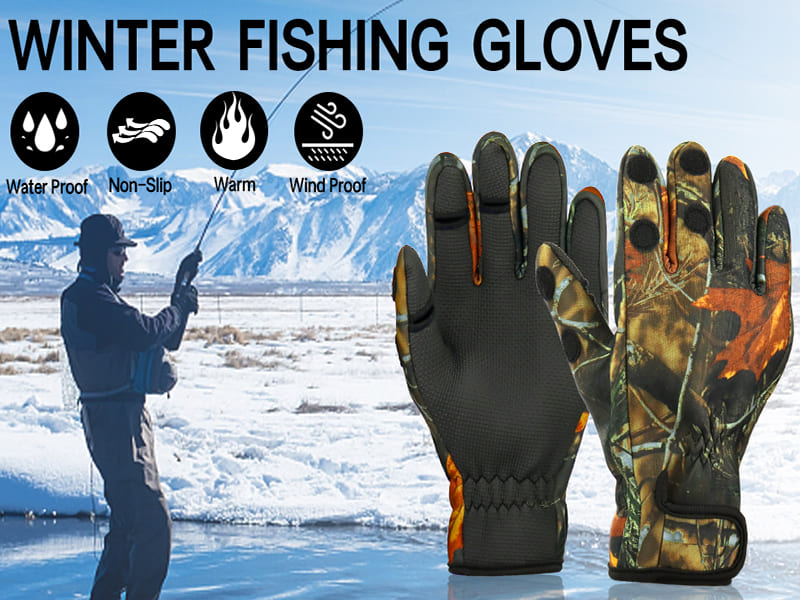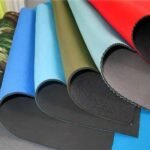Neoprene gloves are an essential item for industries, sports, and outdoor activities requiring durability and protection. Their unique construction and materials provide a balance of flexibility, insulation, and resistance to various elements. But what exactly makes neoprene gloves so versatile and effective? Let’s explore the details.
Neoprene gloves are made of synthetic rubber (neoprene) combined with other materials for enhanced performance. These materials make them durable, flexible, and resistant to water, chemicals, and cold temperatures.
Understanding what neoprene gloves are made of helps highlight their value for different applications. Read on to learn more.
What Are Neoprene Gloves?
Neoprene gloves are protective gloves designed to provide insulation, flexibility, and resistance to various environmental factors. They are widely used in industries such as healthcare, diving, fishing, and construction.
Neoprene gloves are made from synthetic rubber, offering protection against cold, moisture, and certain chemicals. They are durable, stretchy, and comfortable, making them ideal for various tasks and activities.
These gloves cater to users who need reliable protection without sacrificing dexterity.
Key Features of Neoprene Gloves
| Feature | Benefit |
|---|---|
| Water Resistance | Keeps hands dry in wet conditions |
| Thermal Insulation | Protects against cold environments |
| Stretch and Flexibility | Allows ease of movement |
| Chemical Resistance | Shields hands from mild chemicals |
Neoprene gloves combine these features to meet diverse protection needs effectively.
What Material Is Neoprene Made Of?
Neoprene, also known as polychloroprene, is a synthetic rubber created through the polymerization of chloroprene. It is highly durable, elastic, and resistant to various environmental factors.
Neoprene is a synthetic rubber derived from chloroprene, offering excellent water resistance, thermal insulation, and flexibility. Its versatility makes it a top choice for gloves and other protective gear.
This material’s adaptability allows it to be used in a variety of industries.
Properties of Neoprene
| Property | Description |
|---|---|
| Water Resistance | Prevents absorption of moisture |
| Temperature Tolerance | Retains flexibility in cold climates |
| Chemical Resistance | Resists oils, solvents, and acids |
| Elasticity | Provides a snug and comfortable fit |
These characteristics make neoprene the perfect base material for gloves.
How Are Neoprene Gloves Constructed?
The construction process of neoprene gloves involves multiple steps to ensure they are durable, functional, and comfortable.
Neoprene gloves are constructed by cutting neoprene sheets into specific shapes, stitching or gluing them together, and often adding a lining for extra comfort or insulation. Seams are reinforced for durability and water resistance.
The process combines craftsmanship and technology to create high-quality gloves.
Steps in Neoprene Glove Construction
- Material Preparation:
- Neoprene sheets are prepared with varying thicknesses depending on the glove’s intended use.
- Cutting and Shaping:
- Patterns are cut to fit specific glove sizes and designs.
- Assembly:
- Pieces are stitched or glued together using specialized techniques.
- Lining and Coatings:
- Linings are added for comfort, while coatings enhance grip or resistance.
- Quality Inspection:
- Each glove undergoes rigorous testing for durability and performance.
This meticulous construction ensures neoprene gloves meet high standards.
What Are the Benefits of Neoprene Gloves?
Neoprene gloves offer several advantages over other types of gloves, making them a preferred choice for many users.
Neoprene gloves provide excellent water resistance, insulation, flexibility, and durability. They are versatile and suitable for use in extreme temperatures and wet or chemical-prone environments.
Their unique benefits make them indispensable in demanding conditions.
Advantages of Neoprene Gloves
| Advantage | Explanation |
|---|---|
| Water Resistance | Ideal for wet or aquatic environments |
| Thermal Protection | Keeps hands warm in cold conditions |
| Flexibility | Enhances grip and hand movements |
| Chemical Resistance | Protects against mild chemicals |
These benefits cater to a wide range of applications and user needs.
What Are Neoprene Gloves Best for Protection From?
Neoprene gloves are specifically designed to protect against several environmental and occupational hazards.
Neoprene gloves protect against water, cold temperatures, mild chemicals, and abrasions. They are effective in preventing exposure to harsh elements and ensuring user safety.
Their protective qualities are essential for many industries and outdoor activities.
Common Hazards Neoprene Gloves Protect Against
- Water and Moisture:
- Keeps hands dry in aquatic environments.
- Cold Temperatures:
- Provides insulation for extreme weather.
- Chemical Exposure:
- Shields hands from solvents, oils, and acids.
- Physical Abrasions:
- Offers resistance against cuts and scratches.
Neoprene gloves are a versatile solution for various safety concerns.
What Are the Common Applications of Neoprene Gloves?
Neoprene gloves are used across diverse industries and activities due to their protective and functional properties.
Neoprene gloves are commonly used in healthcare, construction, fishing, diving, and outdoor sports. They provide protection and comfort for tasks requiring dexterity and resistance to environmental factors.
Their adaptability makes them a staple in many fields.
Industries and Activities Using Neoprene Gloves
| Industry/Activity | Use Case |
|---|---|
| Healthcare | Protection against fluids and contaminants |
| Fishing and Diving | Water resistance and grip enhancement |
| Construction | Protection from abrasions and chemicals |
| Outdoor Sports | Warmth and flexibility in cold weather |
These applications demonstrate the versatility of neoprene gloves.
Conclusion
Neoprene gloves are a versatile and essential product for many industries and activities. Made from synthetic rubber, they provide water resistance, insulation, and flexibility, making them ideal for various protective applications.
At Szoneier, we specialize in manufacturing high-quality custom neoprene gloves that cater to your specific needs. Whether you’re a brand owner, wholesaler, or retailer, our expertise ensures top-notch products with a range of customization options.
Contact us today at info@neoprene-bag.com or visit www.neoprene-bag.com to explore how we can help you meet your neoprene glove requirements. Let’s work together to create gloves that deliver exceptional performance and style.











